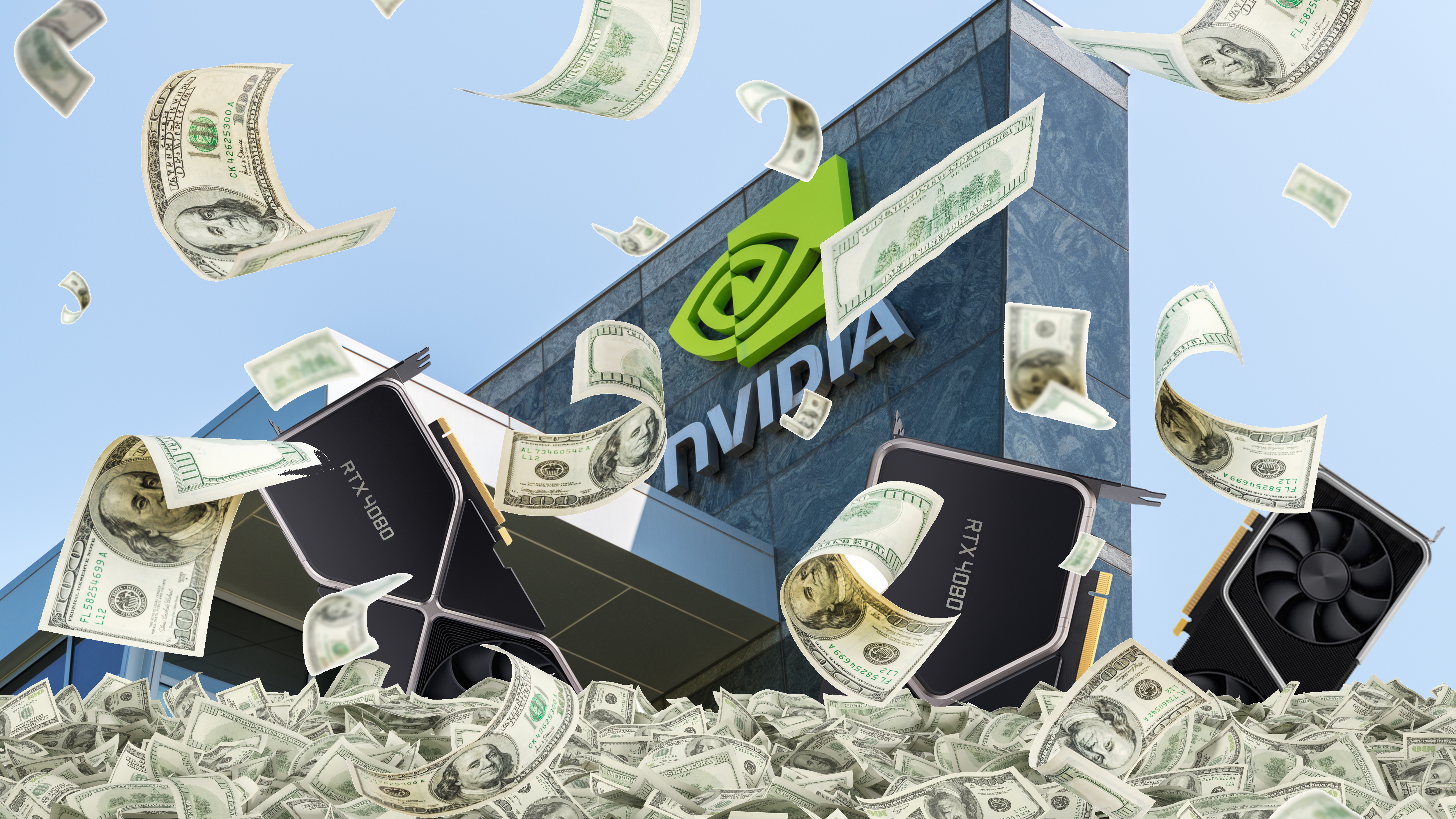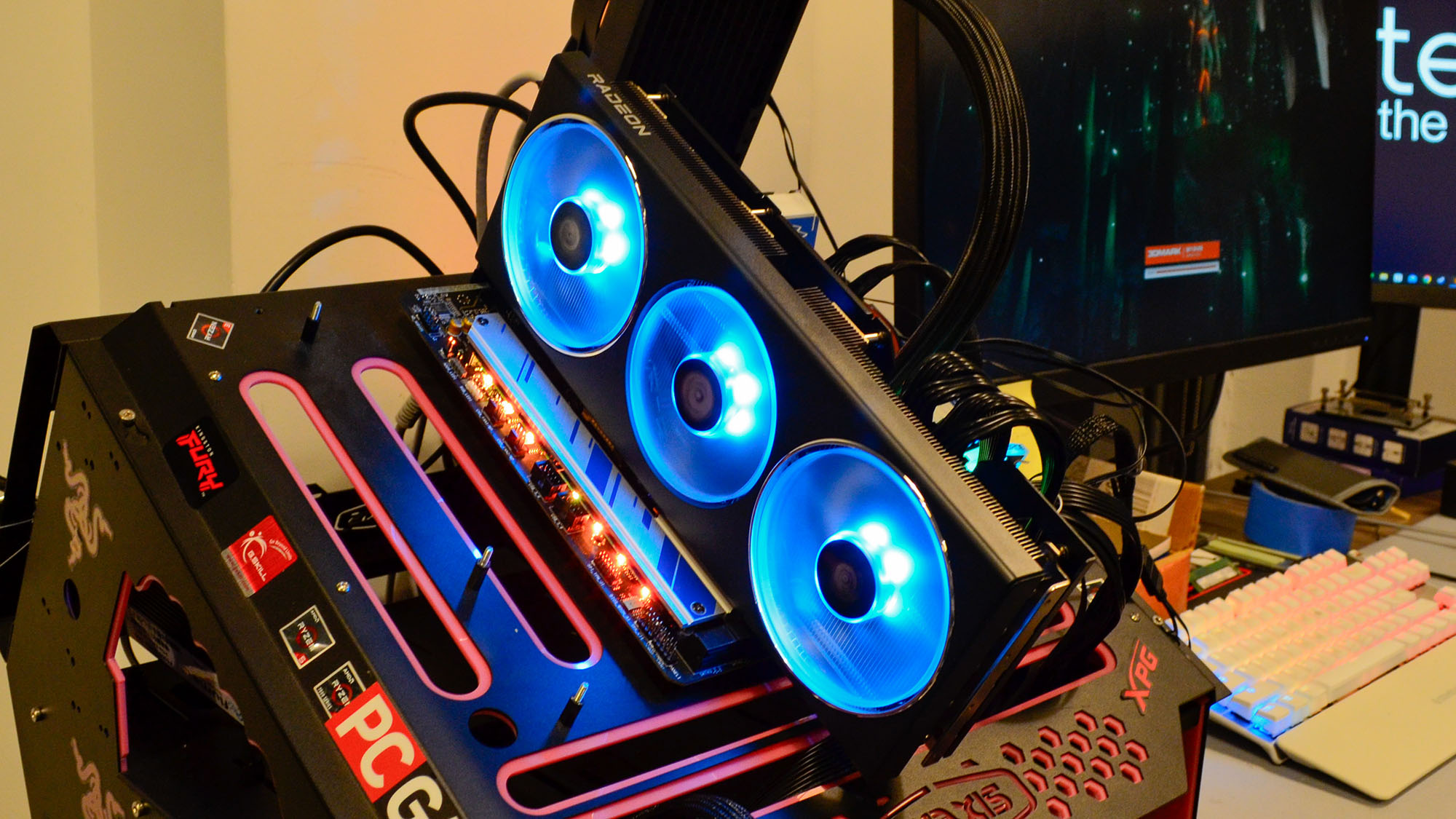
Nvidia has even more of a stranglehold on the GPU market right now, going by the latest stats from an analyst firm.
Tom’s Hardware spotted that Jon Peddie Research (JPR) now has stats for Q1 2024, and on an overall level, it’s positive news, as desktop graphics card shipments are up strongly by 39% year-on-year. (Even if they’re down on the previous quarter – but that’s more wrapped up in seasonality, with Q4 being a bumper time for sales).
Nvidia’s market share shot up to 88% in Q1, according to JPR, from 80% the previous quarter, and most of that was, of course, stolen from AMD, which fell from 19% to 12%. Meanwhile Intel, struggling to keep afloat with its Arc (ahem) GPUs, pretty much sunk this quarter if JPR is right, with its 1% share vanishing to become 0% (or negligible, basically – not literally zero).
If we look at the historical chart of GPU market share from JPR, we can see that Nvidia has never had a stronger grip on the world of desktop graphics cards. Team Green has previously seen its market share in the high eighties, peaking at 87% in 2022, but it’s never been quite as high as it is now (at least not going back over the past decade, and as far as we can recall, before that too).
Nvidia holds what amounts to a near-monopoly, in the same vein as, say, Google with search, at this point (although the GPU market is more prone to larger shifts, it has to be noted).
At any rate, this sounds like bad news for the consumer, doesn’t it? Well, maybe not, and let’s dive in to explore that next.

Analysis: Pushing AMD to come up with something special?
Certainly, this near-monopoly being a depressing reality is an understandable viewpoint to immediately gravitate towards. Nvidia has been charging a relative fortune for its RTX 4000 GPUs (particularly from mid-to-higher-end) and while pricing has finally eased off this year to some extent – which may be part of the reason for the jump in market share – it’s still relatively high overall.
And with Team Green sitting back and looking at this success, it hardly bodes well for what Nvidia might choose to do with prices for its next-gen RTX 5000 models, does it? Well, maybe not, but we’re holding on to a hope that this latest minor market share earthquake could shake things up and give AMD a kick in the seat of the pants.
Here’s our theory for what it’s worth: remember, AMD doesn’t have any higher-end graphics cards coming out later this year with RDNA 4 (based on a whole load of pretty strong rumors at this stage – it’d be a shock if they were wrong, to say the least).
This won’t be a great look for Team Red, really, as Nvidia purportedly steamrollers in with a mighty new RTX 5090 (that could be a revolutionary flagship on several fronts, not just performance) and a heavyweight RTX 5080. While AMD has no reply whatsoever, of course.
We’ve argued this before, and we’ll push the idea again now: AMD will want – no, need – to make a real mark on the mid-range to keep up its image as a cutting-edge GPU maker. And that likely means some seriously competitive value propositions here, to really take the fight to Nvidia (and maybe make the RTX 5080 look bad – if it’s as pricey as we expect the GPU could be).
Now, what with this latest shift, and stomach-churning drop in GPU market share for AMD, in our books, that makes this prospect even more likely to happen. In short, this fresh development makes it seem like Team Red is really going to have to pull out the big guns for RDNA 4. (Assuming there’s no great recovery in Q2, on the spin of a dime – which seems unlikely).
In a way, then, Nvidia’s increased dominance could work out well for consumers, although this is, of course, pure speculation, and the situation could certainly pan out in other ways that aren’t so great for the average consumer. Let’s not be naïve here – and as mentioned, this likely isn’t good news for the prospective pricing of the RTX 5080 (we already know the RTX 5090 is going to be exorbitant, naturally).
As for Intel dwindling to effectively nothing, that’s disappointing, as a third horse in the GPU race would be another win for consumers. While Alchemist has floundered, though, don’t rule out Intel’s next-gen, Battlemage, just yet. The 2nd-gen graphics cards may end up being pretty limited in scope – maybe lower-end only – but peppy candidates for the best budget GPUs would be very welcome further down the line (next year).







